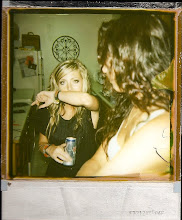When reading this selection, the section titled, “Conditions Necessary for Sound to Temporalize Images” brought a specific film to mind that truly made the descriptions ring true. The article writes about the way in which sound is sustained and “a smooth and continuous sound is less animating than an uneven or fluttering one.” There was a film that I was asked to watch in Writing About Film called, Henry Fool.
Around about 3:35 in this clip, the notorious character Henry Fool comes into town, or into the main character’s life, or even the story. But, the main character is leaning against his fence and we begin to hear these pouncing of notes slowly come in along with the image. Nothing is happening in the image at all, but the music makes it seem as if something is about to. But, nothing in the actual image (at this point) even points to this mysterious presence that the music is creating. As the viewer, we know something that the character doesn’t know yet. Then there is a rumble of thunder, to which the character looks up and acknowledges with a delayed reaction. Up until this point the film is presenting, as the article writes, an image that “has no temporal animation or vectorization in itself. The sound brings this feeling about all on its own, without the help of the image. But, after the thunder, the image and sound begin to work together. And the intensity begins to build. What I find so fascinating about the music in this film is the simplicity of it. It is such simple notes being played, but they create such as intensified effect that I think would not really exist without, especially in this entrance. There are even points in the film in which there are merely a few keys being played on the piano, or the dripping of water that creates an eerie feeling about the film. I find sound to be truly fascinating, and how it works to intensify a film. When I was asked to write about this film, there was no specific guideline to what we needed to write about. Laudadio told us to write about the thing that we were drawn to the most when watching it. Without a doubt, I was drawn to the peculiar and magnificent use of sound. It may not be the best film, but I think there is something quite wonderful about its use of sound. Up until that point, I had written nothing about sound. But, after writing an entire theory paper about its use in film, I found myself discovering things that I had never noticed about film in general. I think that this article kind of hones in on these aspects. There was a truly gritty and creepy feeling in many aspects of this film, but I began to notice that much of that had to do with the way that sound was used in accordance with the images.
I also found it a bit amazing that it is our ears that hear quicker than our eyes see and process images. I have actually never seen any of the Star Wars movies, so I was a bit surprised to hear that there is a cut in which the door is not really opened, but there is a cut and the sound makes it seem as if the door is slid open. That is amazing!!! I would actually like to experiment more with this in my editing tactics. I do know from my own experience with editing, that sound can be an extremely useful tool in the coherence of a film. When things aren’t working, it is sometimes helpful to overlap sound and mess with things….cheat, I guess you could say. That is the magic of film I guess. I am curious to know if someone that is deaf catches on to this quick jump in Star Wars with the doors. The article mentions that deaf people are strengthened more on the visual side. I am curious to know if these sort of editing tactics fall short in the eyes of someone that cannot hear those sound bridges and such?
Subscribe to:
Post Comments (Atom)

No comments:
Post a Comment